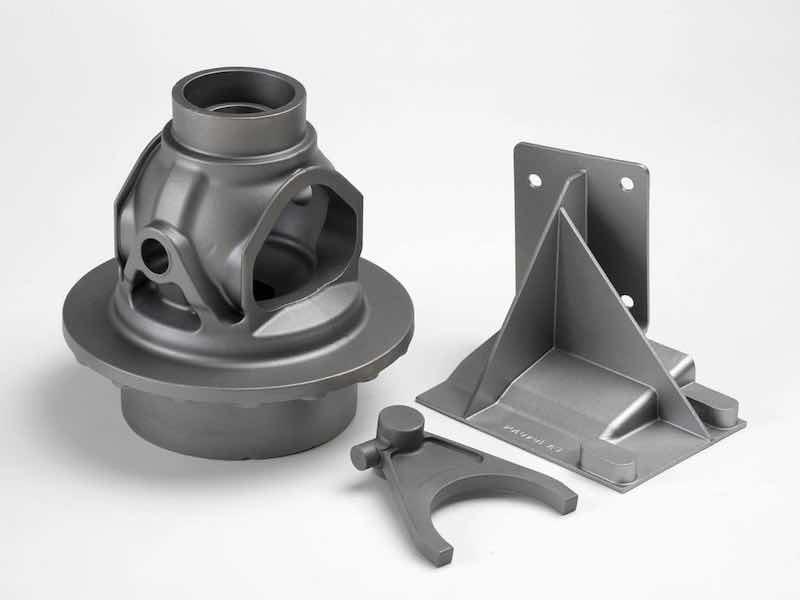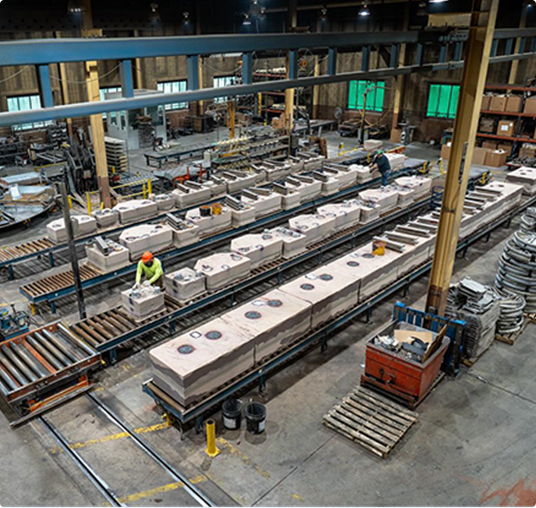Comprehending the Function of Aluminum Foundry in Creating High-Quality Steel Products
Aluminum shops are crucial in the manufacturing of high-grade steel items. They employ different casting methods, such as sand and die spreading, to accomplish accuracy and sturdiness. With rigorous quality assurance measures in area, these facilities assure that their items meet industry requirements. As markets progress, the role of Aluminum factories proceeds to adjust. This questions regarding future innovations and sustainability methods that might redefine their impact.
The Aluminum Casting Refine: Advancements and techniques
The Aluminum spreading procedure has evolved considerably, incorporating different techniques and advancements that improve effectiveness and item quality. Commonly, approaches such as sand casting and die spreading were predominant; however, developments have presented procedures like financial investment casting and low-pressure die casting. These technologies make it possible for manufacturers to achieve detailed designs and tighter resistances, lowering product waste and enhancing overall efficiency.
Moreover, the assimilation of computer-aided layout (CAD) and simulation software permits even more precise modeling and testing, making certain that possible concerns are identified early in the production cycle. In addition, developments in alloy formulations bring about improved mechanical buildings and deterioration resistance
These growths not only enhance manufacturing but likewise advertise sustainability by decreasing energy usage and discharges. As the market remains to welcome new innovations, the Aluminum casting procedure stays a critical part in generating top quality steel items that fulfill diverse market demands.
Applications of Aluminum in Various Industries
Aluminum's versatility and favorable residential or commercial properties make it a useful material across different markets. In the automotive sector, Aluminum is widely made use of for its light-weight characteristics, adding to boosted fuel efficiency and performance. The aerospace industry likewise advantages, as light weight aluminum's high strength-to-weight ratio enhances airplane layout while keeping safety requirements.
In building, Aluminum is preferred for its sturdiness and resistance to deterioration, making it suitable for home window frames, roofing, and architectural elements. The packaging market leverages aluminum's safe nature and recyclability, specifically in food and beverage containers, guaranteeing security and sustainability.
Furthermore, the electrical sector employs Aluminum for its excellent conductivity in wiring and transmission lines. The customer products industry utilizes Aluminum in products varying from kitchen utensils to electronic devices, emphasizing its versatility. Aluminum plays an important function in enhancing capability, performance, and sustainability across varied applications.
Benefits of Making Use Of Aluminum Over Other Steels
While many metals are employed in different applications, Aluminum attracts attention as a result of its one-of-a-kind combination of buildings that use a number of benefits over various other products. Its light-weight nature significantly reduces transport prices and power intake, making it suitable for markets such as automotive and aerospace. Aluminum's excellent corrosion resistance boosts durability, prolonging the life of products and reducing maintenance requirements. Furthermore, it displays high thermal and electric conductivity, making it suitable for electrical and thermal monitoring applications.
The steel's malleability enables detailed layouts and complicated forms, providing adaptability in producing processes. In addition, Aluminum is 100% recyclable without loss of top quality, advertising sustainability and minimizing environmental influence. Aluminum Foundry. These qualities, combined with its fairly affordable compared to other metals, placement Aluminum as a preferred choice throughout different industries. Overall, the benefits of Aluminum add to its increasing appeal in the production of top quality steel items

High Quality Control Measures in Aluminum Foundries
Quality control actions play a vital duty in the Aluminum Foundry procedure, making sure that the final products meet rigorous sector requirements and client expectations. These steps commonly begin with material inspection, where raw Aluminum is evaluated for pureness and composition. As soon as the spreading procedure begins, temperature control is vital; preserving excellent molten metal temperature levels protects against Get More Information flaws such as porosity and contraction.
Furthermore, non-destructive testing (NDT) techniques, consisting of radiographic and ultrasonic assessments, are used to discover internal imperfections without damaging the spreadings. Aesthetic examinations are also conducted at various stages to determine surface flaws.
Furthermore, adherence to well-known high quality administration systems, such as ISO requirements, is necessary for keeping consistency and traceability throughout the manufacturing procedure. Regular audits and worker training on high quality criteria add to a general society of excellence, making certain that the products not only satisfy but go beyond customer expectations in performance and longevity.
The Future of Aluminum Foundries: Fads and Sustainability
As the Aluminum Visit Your URL Foundry market evolves, emerging fads and a concentrate on sustainability are reshaping its landscape. Raising demand for durable and light-weight products in industries like automobile and aerospace drives development in Aluminum spreading methods. Advanced innovations, such as expert system and automation, are enhancing production performance and precision while minimizing waste.
Sustainability is becoming a vital worry, prompting foundries to apply green techniques, consisting of recycling Aluminum scrap and utilizing renewable resource resources. The shift in the direction of circular economic climate principles motivates factories to reduce ecological effect while fulfilling customer expectations for sustainable items.
Furthermore, regulatory stress are pressing the sector towards cleaner procedures, cultivating collaboration in between manufacturers and ecological companies. As these trends assemble, the future of Aluminum foundries will likely be identified by a commitment to quality, efficiency, and sustainability, ensuring their importance in an open market.
Regularly Asked Inquiries
What Are the Environmental Effects of Aluminum Foundries?
Light weight aluminum factories contribute to environmental influences via power intake, greenhouse gas emissions, and possible air and water contamination. In addition, mining bauxite for Aluminum can result in habitat damage and soil destruction, influencing neighborhood environments.

Just How Do Shops Ensure Worker Security Throughout Manufacturing?
Factories execute strenuous safety and security procedures, including protective tools, ventilation systems, and normal training. They conduct danger assessments and maintain safety criteria to lessen risks, making sure a more secure working environment for employees throughout the manufacturing procedure.
What Accreditations Should an Aluminum Foundry Have?
An aluminum Foundry should have qualifications such as ISO 9001 for high quality monitoring, ISO 14001 for environmental management, and OSHA conformity for security requirements. These certifications guarantee adherence to market guidelines and commitment to top quality and safety and security techniques.
Exactly How Does Aluminum Recycling Affect Foundry Procedures?
Aluminum reusing considerably enhances Foundry operations by supplying an affordable raw material source, lowering energy intake, and reducing environmental effect - Aluminum Foundry. It likewise encourages lasting methods, allowing foundries to keep competition in a rapidly progressing market
What Are Usual Problems in Aluminum Castings?
Common flaws in Aluminum spreadings consist of porosity, contraction, incorporations, and surface area blemishes. These problems can occur from improper mold layout, inadequate putting techniques, or contamination throughout the melting and spreading procedures, impacting total item top quality.
